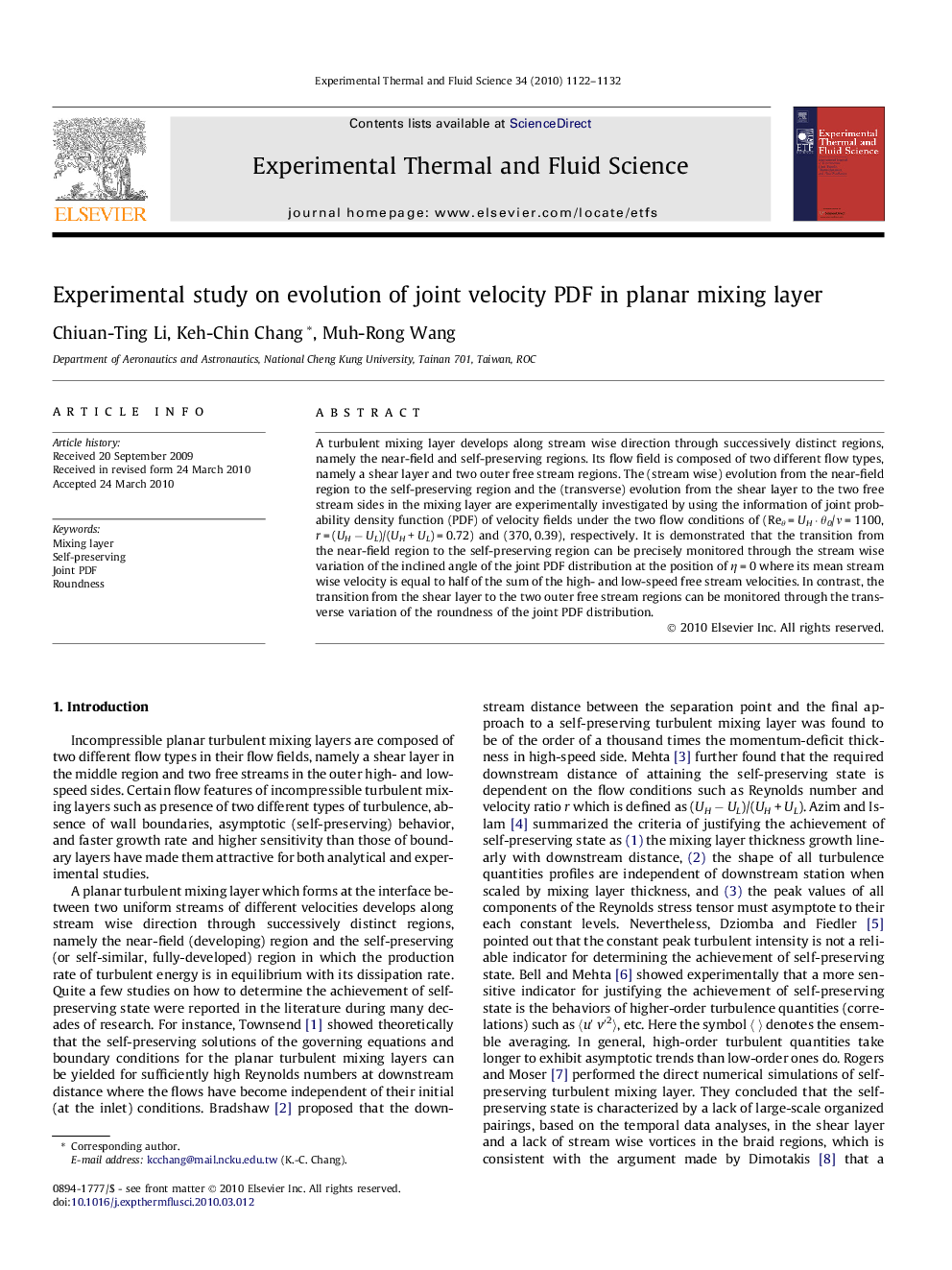| Article ID | Journal | Published Year | Pages | File Type |
|---|---|---|---|---|
| 652473 | Experimental Thermal and Fluid Science | 2010 | 11 Pages |
A turbulent mixing layer develops along stream wise direction through successively distinct regions, namely the near-field and self-preserving regions. Its flow field is composed of two different flow types, namely a shear layer and two outer free stream regions. The (stream wise) evolution from the near-field region to the self-preserving region and the (transverse) evolution from the shear layer to the two free stream sides in the mixing layer are experimentally investigated by using the information of joint probability density function (PDF) of velocity fields under the two flow conditions of (Reθ = UH · θ0/ν = 1100, r = (UH − UL)/(UH + UL) = 0.72) and (370, 0.39), respectively. It is demonstrated that the transition from the near-field region to the self-preserving region can be precisely monitored through the stream wise variation of the inclined angle of the joint PDF distribution at the position of η = 0 where its mean stream wise velocity is equal to half of the sum of the high- and low-speed free stream velocities. In contrast, the transition from the shear layer to the two outer free stream regions can be monitored through the transverse variation of the roundness of the joint PDF distribution.
